 | | Tara's Graduation from the University of Pennsylvania |
Enjoy the New School Year!
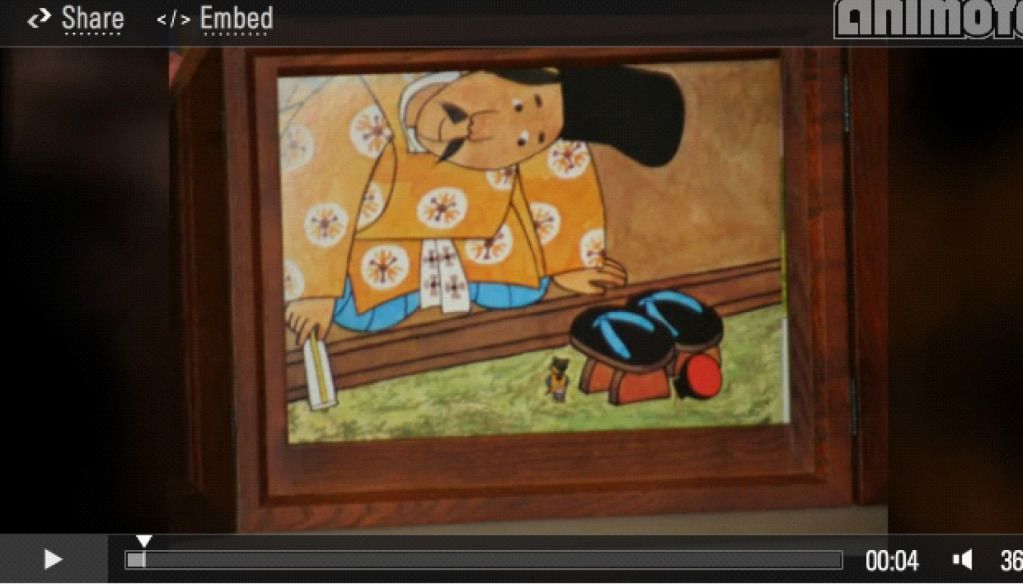 | | Berne, NY 9th graders and kamishibai |
|
Kamishibai:
A Versatile Tool to Develop
Reading, Writing
and Oral Storytelling Skills
| |
|
One of thirteen
Zodiac Postcards
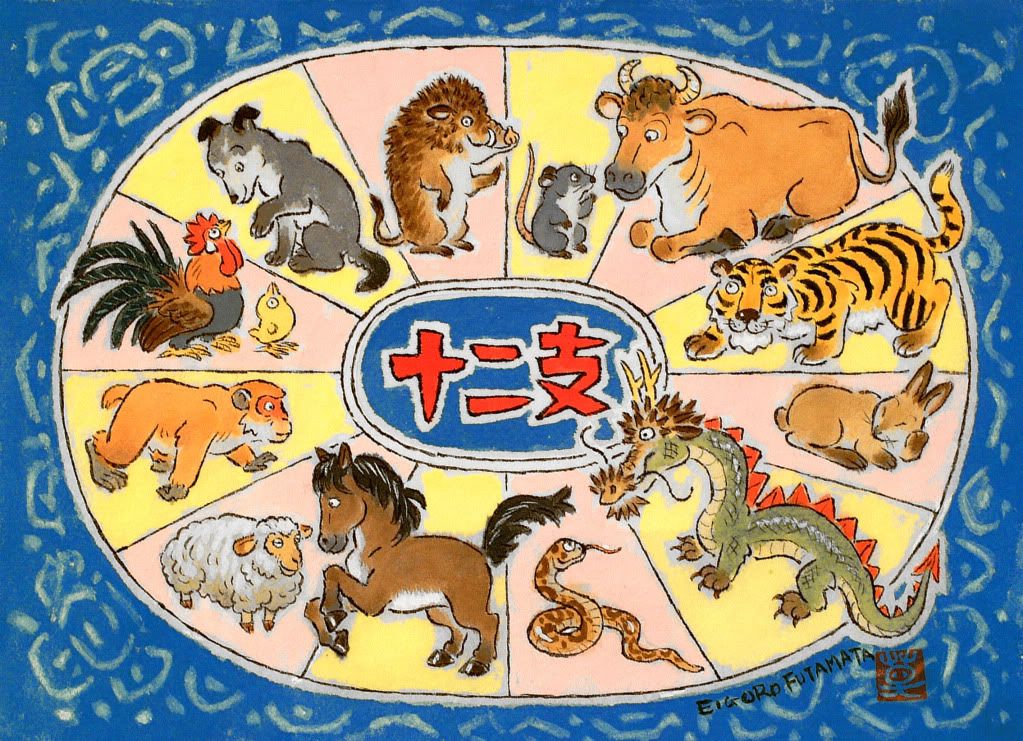 | | 12 Asian Zodiac Animals |
All kamishibai include a
Teacher's Guide
Click Teacher's Guide
The Kamishibai Classroom
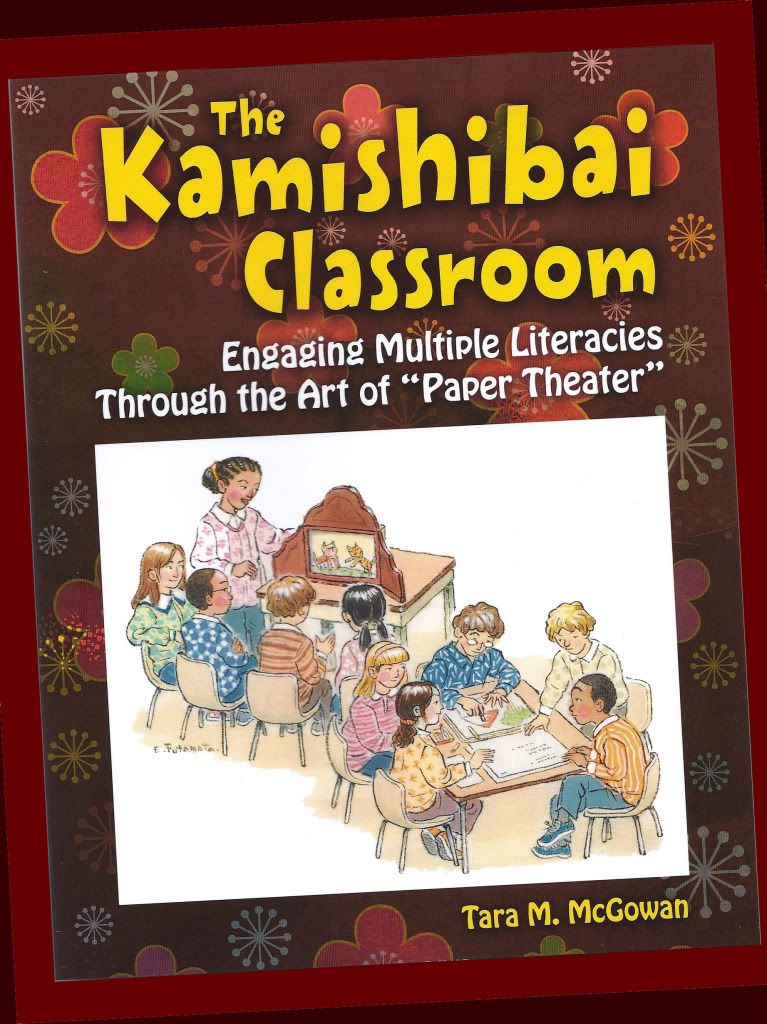 | | The Kamishibai Classroom: Engaging Multiple Literacies Through the art of "Paper Theater" by Tara McGowan |
Caldecott Medalist
Allen Say
Remembers
Kamishibai
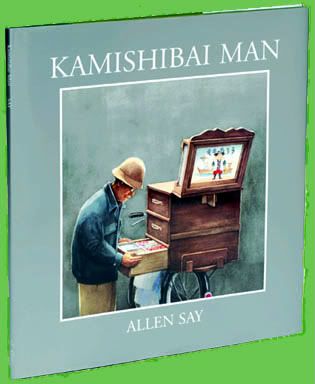 | |
Signed by the author
|
For more information please go to our website!
 | | Jeffrey Dym's videos How to use kamishibai and Kamishibai in the classroom |
|
|
Kamishibai website
About Us
Manga Kamishibai by Eric Nash
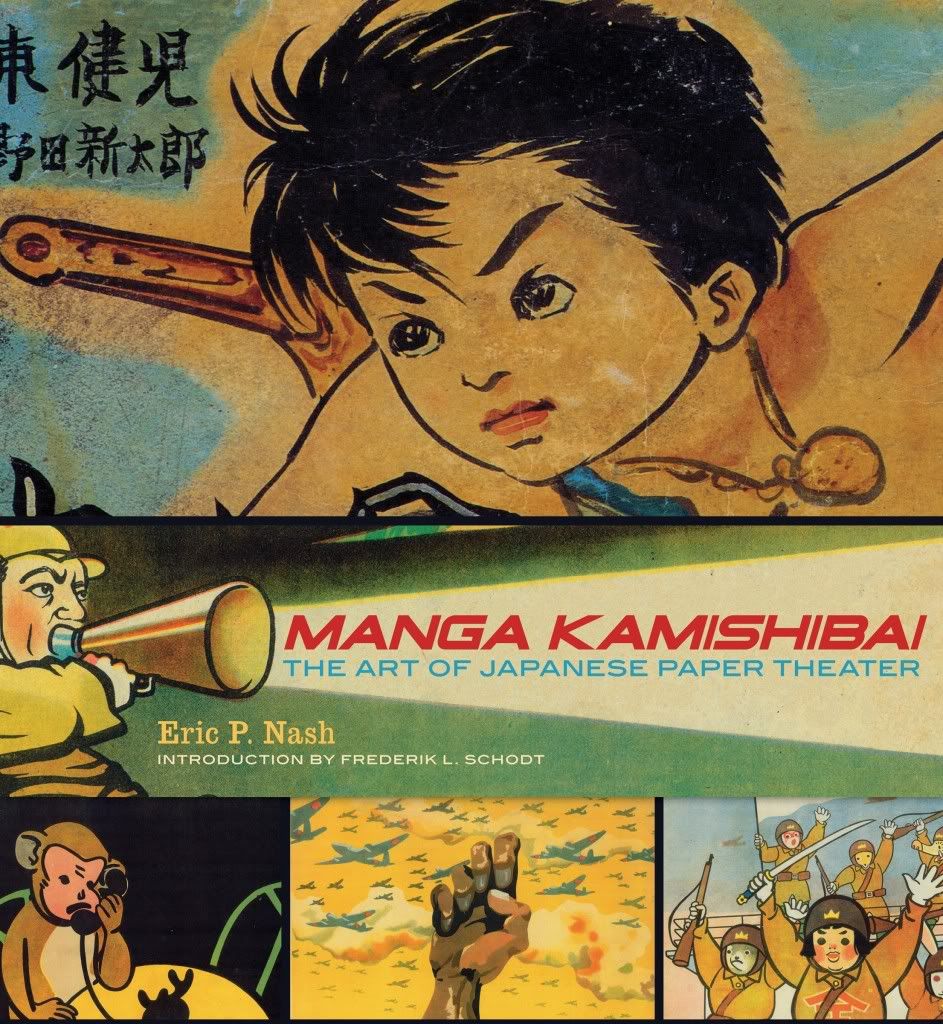 | | Signed by the author |
|
|
|
Momotaro, the Peach Boy
EIGORO FUTAMATA, the illustrator for Momotaro, is a noted Japanese illustrator of both children's books and kamishibai. He is one of the pioneers in the Japanese movement to introduce kamishibai into educational settings and is the recipient of many awards for his illustrations. Mr. Futamata is loved especially for his illustrations of animals and traditional folktales. Also, he graciously created the artwork for Kamishibai for Kids brochures and website.
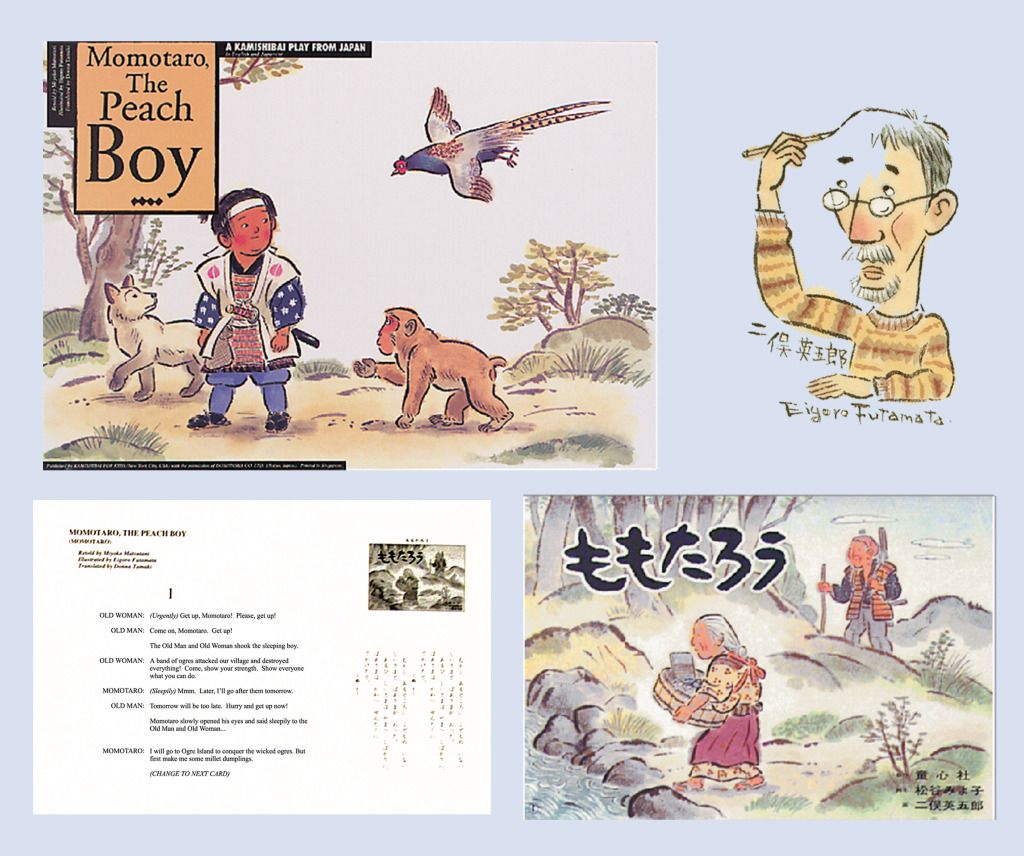 | Adapted by Miyoko Matsutani
Illustrated by Eigoro Futamata |
|
|
 Momotaro, the Peach Boy Momotaro, the Peach Boy
is the protagonist of our kamishibai of the month. Like the Bamboo Princess, Momotaro is also a magical child found by a worthy, but childless, elderly couple. As his name "Peach Boy" hints, an old woman found him in a gigantic peach, which she plucked out of a river while washing clothes.
Momotaro is probably one of the most well known characters in Japanese folklore. It is an iconic moment when the young baby boy pops out of the peach as the old man and woman cut it open!
When Momotaro grows older, he ventures forth to battle the oni monsters who have ravaged his village and abducted the young women and children. He is dressed like an ancient warrior - wearing a suit of armor, a special headband and carrying a sword.
In this unusual variant of the tale, adapted by the well-known children's book author and folktale specialist Miyoko Matsutani, Momotaro does not set off on his quest until he has eaten and slept to his heart's content. Once he is ready to confront the oni, he enlists the help of a dog, monkey and pheasant. As a team they rescue the young women and children from the oni. Momotaro returns with them in triumph to his village, where they resume their peaceful daily lives.
|
Spotlight on USA 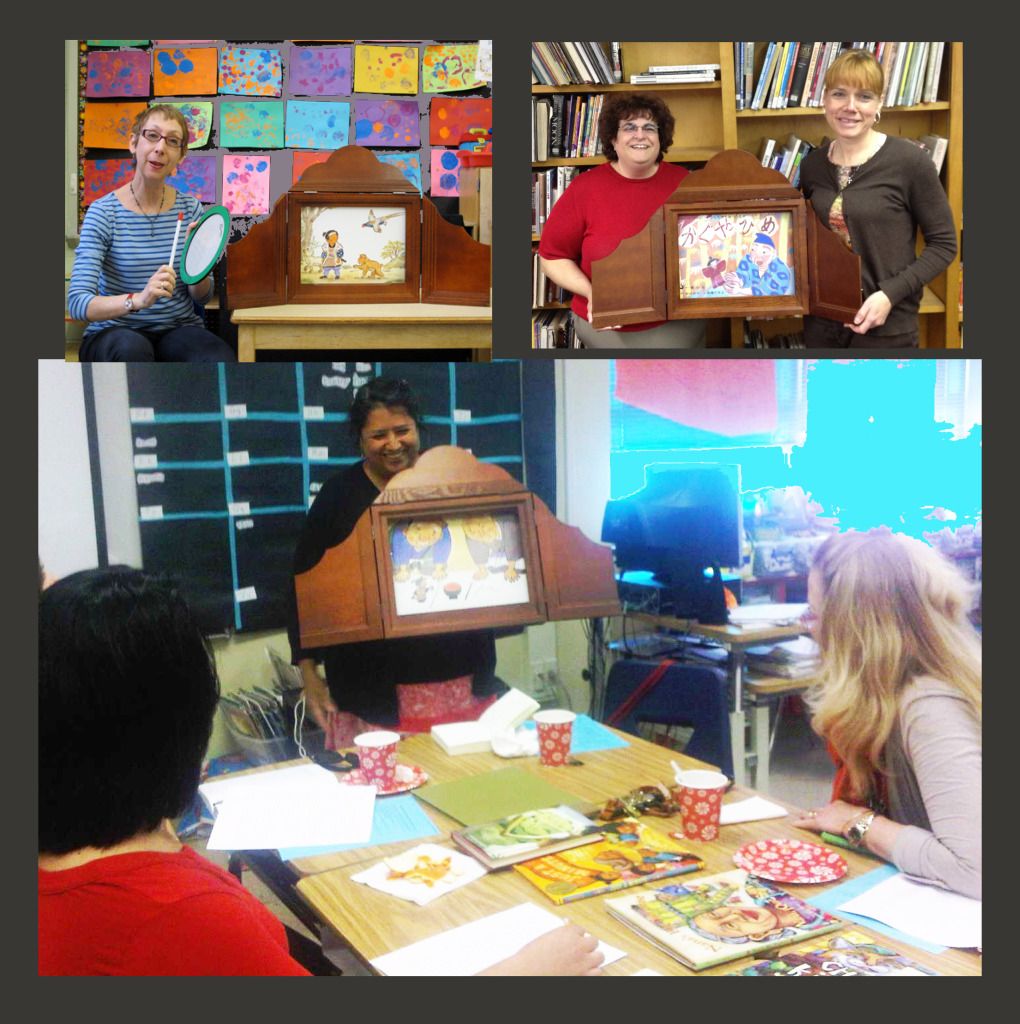 | |
Diversity of kamishibai practice
within the USA (clockwise from left)
Brooklyn, NY; Berne, New York
and San Marcos, Texas
|
The past three interviews in this series have demonstrated the variety of kamishibai performances around the globe from Peru to Sweden to Turkey. This issue focuses on the diversity of practice within the USA. It features the work of four kamishibai storyteller/teachers in Texas and New York State.
A common misconception about kamishibai, even in Japan, is that it is a medium only for very young children. This is because in recent years, publishers in Japan, have tended to cater to that audience.A look at the history of kamishibai however, reveals that it is a format, not a genre, and can be adapted to any age group or audience.
As the following interviews illustrate, a key characteristic of kamishibai is that it only comes alive through performance-whether students perform for each other, as in Diana Garcia's bilingual 4th grade class in Texas; perform their own stories in hand-made cereal box stages, as in Beth Davis and Audra Rys's unit for high school students in Berne, New York; or join in participatory performance for all ages with storyteller, Nadine Grisar of Brooklyn, New York.
The force of kamishibai performance to motivate students, which is the focus of my dissertation (now available in electronic format!), comes through in the words of Diana Garcia's students. As Sareya says, "the special thing about the kamishibai is that you could read it to your friends or family, and it shows a spectacular movie."
Kamishibai is a versatile format with potential for all manner of adaptations, variations, and innovations. In this newsletter, we welcome readers from around the country and across the globe to share the ways they have found kamishibai useful in their own particular context. As these four ladies have shown us, there is much we can learn from each other, and we look forward to hearing from you!
Tara McGowan, PhD
University of Pennsylvania, Graduate School of Education
Author of The Kamishibai Classroom: Engaging Multiple Literacies through the Art of "Paper Theater" (2010)
|
|
Diana Garcia, 4th Grade
De Zavala Elementary
San Marcos, Texas
I am a bilingual education teacher with a student population that is about 95% Hispanic. I have taught for 17 years; each year I see that my students are rarely exposed to other cultures. I am an active member of the Austin Social Justice Teachers' Inquiry Group, a network of teachers, grad students and professors who meet once a month to share our resources, ideas, units and projects that teach language arts and social studies through a social justice lens.
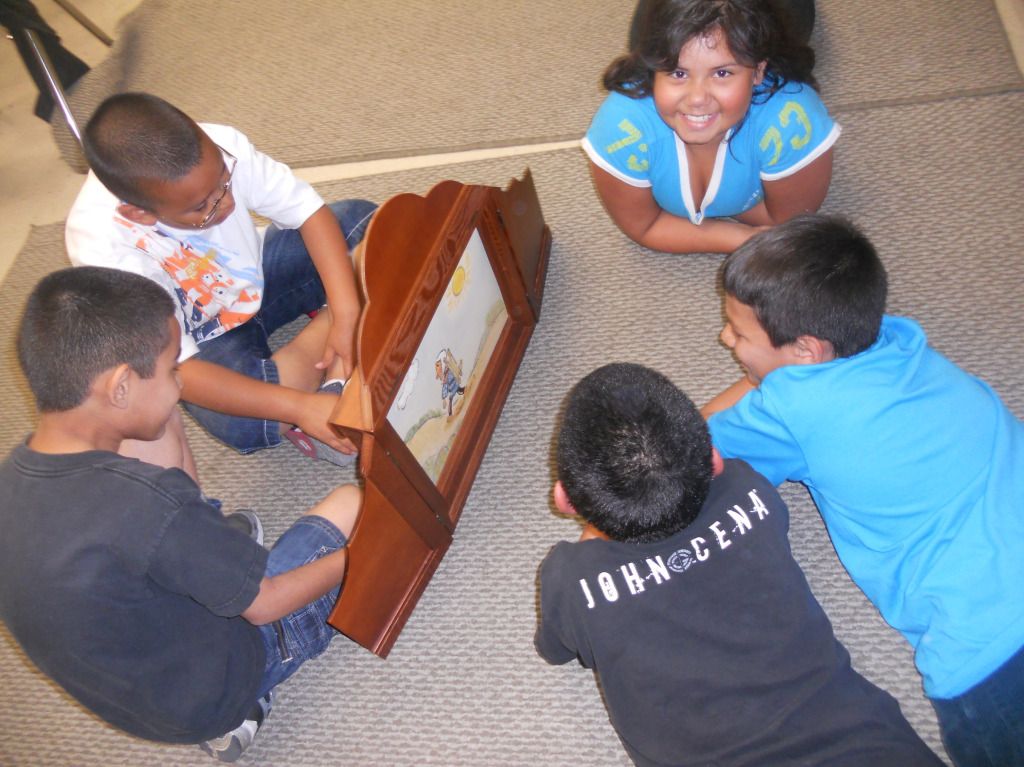 | | My 4th graders keep using the kamishbai stage in the classroom to practice their fluency and voice during Reader's Workshop. |
How did you first hear about Kamishibai?
Several years ago, my friend Jessica Arnston, who is half Japanese, gave me some brochures on kamishibai and on how to teach haiku. I loved the idea of the kamishibai, but didn't pursue getting any kamishibai sets because I just didn't have the money.
Then last year, I was doing a unit on Allen Say with my students, reading all of his books, and when I read Kamishibai Man, my 4th graders just loved it. I thought, wouldn't it be awesome if I had a real kamishibai?
This school year, when I found out that my school district gave small grants for innovative teaching ideas, I wrote up a grant to get two kamishibai stages and several story card sets. Fortunately, the grant committee liked my idea, and I got the funding to purchase 2 kamishibai stages for my school.
When I realized I could get a kamishibai stage through a grant, I went for it, figuring that my students need diverse cultural enrichment.
As a Hispanic, I grew up with an oral storytelling tradition, and I love storytelling! How wonderful to now also have a Japanese mode of storytelling. Our planet is so full of fabulous art, literature, music from all corners of the world. It's great if children get to learn as much as possible about these creative gifts.
|
ENCOURAGES
LANGUAGE EXPLORATION
Motivates all students
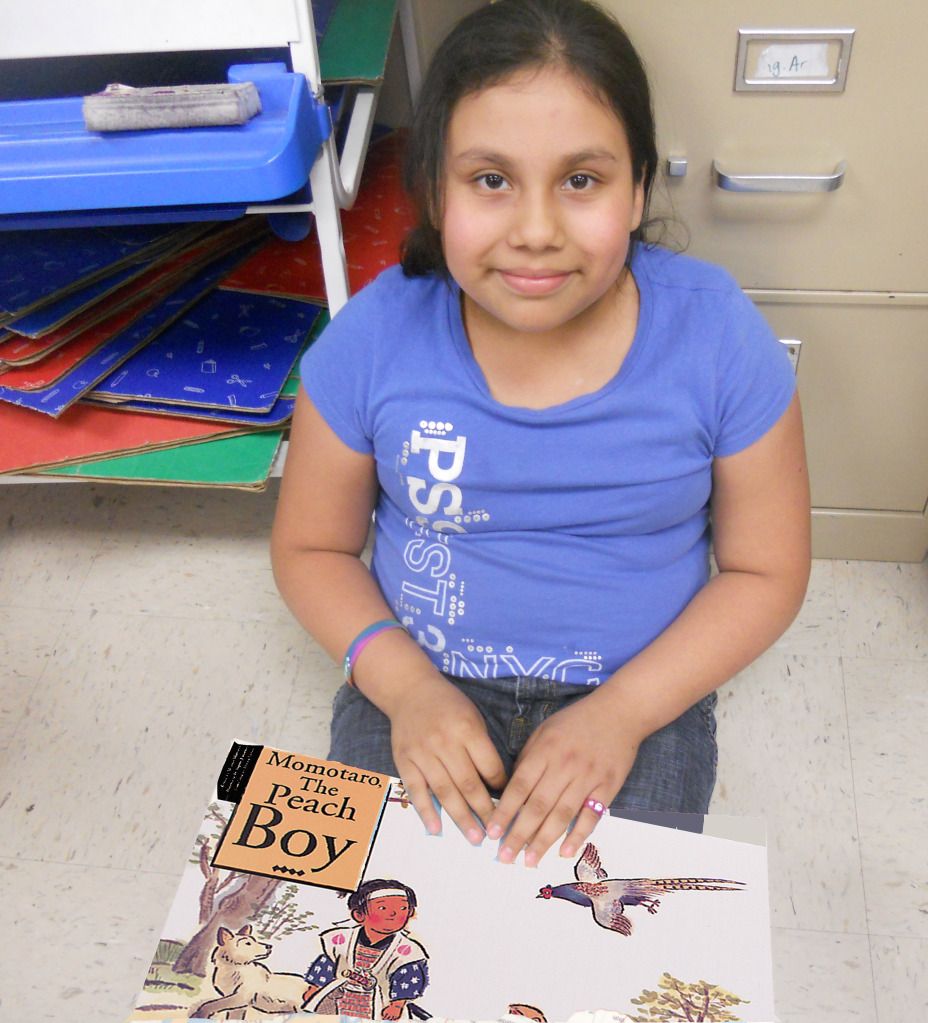 | |
Kamishibai in
Mrs. Garcia's class
|
What do you think students are getting out of this particular format? How have they responded?
I have several students whose primary language is Spanish. Five are still lagging behind in learning academic English and reading with more fluency. Four of these students very much enjoy using kamishibai. They have all practiced stories repeatedly in order to read with a lot of expression.
I was impressed at how these students worked with kamishibai to improve their reading in English. I think kamishibai doesn't feel like a "school book" to them; it's user-friendly. The students get a kick out of the onomatopoeia. I have several English monolinguals who enjoy using kamishibai because they like performing in front of others.These kids especially ask for assignments to read to the younger students.
Kamishibai is a great tool for encouraging students to read aloud, which will help them practice fluency and expression. The stories are repetitive, but not in a boring way, I see my students choosing the same stories over and over. The stories keep them engaged.
|
INTERDISCIPLINARY TOOL
Westerlo Middle/Senior High School
Berne, New York
Co-Taught by:
Beth Davis, Librarian and
Audra Rys, English Language Arts Chair
and 9th Grade ELA teacher
 | |
Beth Davis (left) and Audra Rys (right)
Westerlo Middle/Senior High School
|
Beth Davis:
I have been in the Middle School/High School Librarian at Berne-Knox-Westerlo CSD for sixteen years. During that time, I have seen our collection grow and teacher/librarian collaborations have increased tremendously. In my spare time, I love to read, travel and play Mah Jongg. Listening to and watching Broadway musicals is also a frequent activity of mine. I am happily married and have an 8 year old daughter.
Audra Rys:
I have been an English Teacher at Berne-Knox-Westerlo for 21 years and English Department Chairperson for 12 years. I have loved working and collaborating with Beth Davis, our school librarian. In my free time, I enjoy running, reading, traveling and playing weekly trivia. I also enjoy spending time with my many nieces and nephews. I especially like taking them to local historical sites and museums to share my other love (besides literature): History.
How did you first hear about kamishibai?
In 2010, Mrs. Davis attended the SLMS/NYLA (School Library Media Section of the New York Library Association). One of the sessions she attended was entitled, "Discover Kamishibai-Traditional Japanese Story Cards." This was the first time that she had ever heard of this form of storytelling.
Audra Rys, the 9th grade ELA teacher and ELA chair at my school, and I have been collaborating for over ten years on a unit we call, "The 3F's: Fairy Tales, Folklore, and Fables." Once a week, for the whole school year, each of the 9th grade classes comes to library and studies units devoted to the stories of different time periods or other parts of the world. Some of the units included in the 3F's are: Aesop, Greek and Roman Mythology, African Folktales, Chinese Folktales, and The Grimm Brothers. We had been looking for a new unit to add to the program, and Kamishibai seemed like a perfect fit.
Our Kamishibai unit takes several weeks to complete, as we only get together once per week throughout the entire school year.
Read the outline of our unit on the
Kamishibai for Kids website.
Press here
View the fun in action!
Press on the Link below to see how
older kids enjoy kamishibai:
The video was created by Nanette Morges,
our district's Communication Specialist at the time.
 | |
Older Kids enjoying kamishibai
on animoto
|
|
IMMERSED IN THE STORY THROUGH STRONG VISUALS AND SOUNDSCAPES
 | | Nadine Grisar, Brooklyn, NY performing kamishibai, "Momotaro The Peach Boy" |
Nadine Grisar has been telling stories since 1988, specializing in interactive stories for children and families. She has performed at museums, libraries, religious institutions, schools and environmental and community centers. She has presented kamishibai stories at the Japan Society and the Kinokuniya Bookstore in New York City. Nadine is a teacher at P.S. 217 in Ditmas Park, Brooklyn. She is a member of the Brooklyn Community Storytellers.
What attracted you to kamishibai and to integrating it into your teaching or other work?
I was teaching at P.S. 217 in Ditmas Park, Brooklyn. Our students come from many diverse cultures and many are English language learners. Although I mostly presented my stories orally, (without books or illustrations), I thought presenting stories using Kamishibai cards would help my students better understand the stories through their strong visual images.
Describe the ways you use kamishibai with your students. (Please provide as specific examples as possible)
I incorporate traditional Japanese songs with some stories, for example, Momotaro. I teach the children a rhythm pattern before I tell the story. I have them practice the pattern and invite them to tap and clap when I sing the song at different intervals during the story.
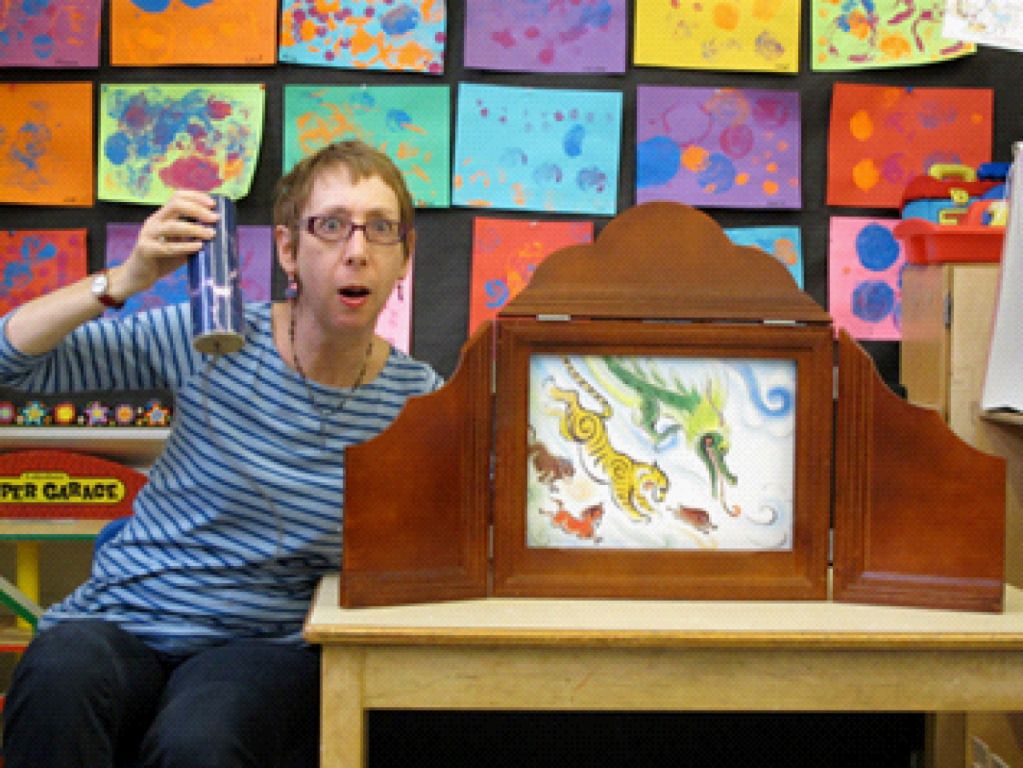 | |
Nadine Grisar, Brooklyn, NY kamishibai, soundscape storyteller
|
I include sound effects for the animals in How The Years Got Their Names. I think it helps the children visualize the animals and their different qualities, ie. I use a thunder tube for the dragon, who is "lightning fast" and some musical spoons for the clippety-clop sound of the horse's hooves, etc.
What do you think students are getting out of this particular format? How have they responded?
By providing strong visual images and soundscapes, the students become immersed in the story. When the children "join in" with rhythm and sound, it brings about as sense of community and instills energy and happiness. By participating vocally and through movement, the listeners take an active role and become part of the story.
|
|
A Special Congratulations
to Our Good Friend, Tara McGowan, PhD
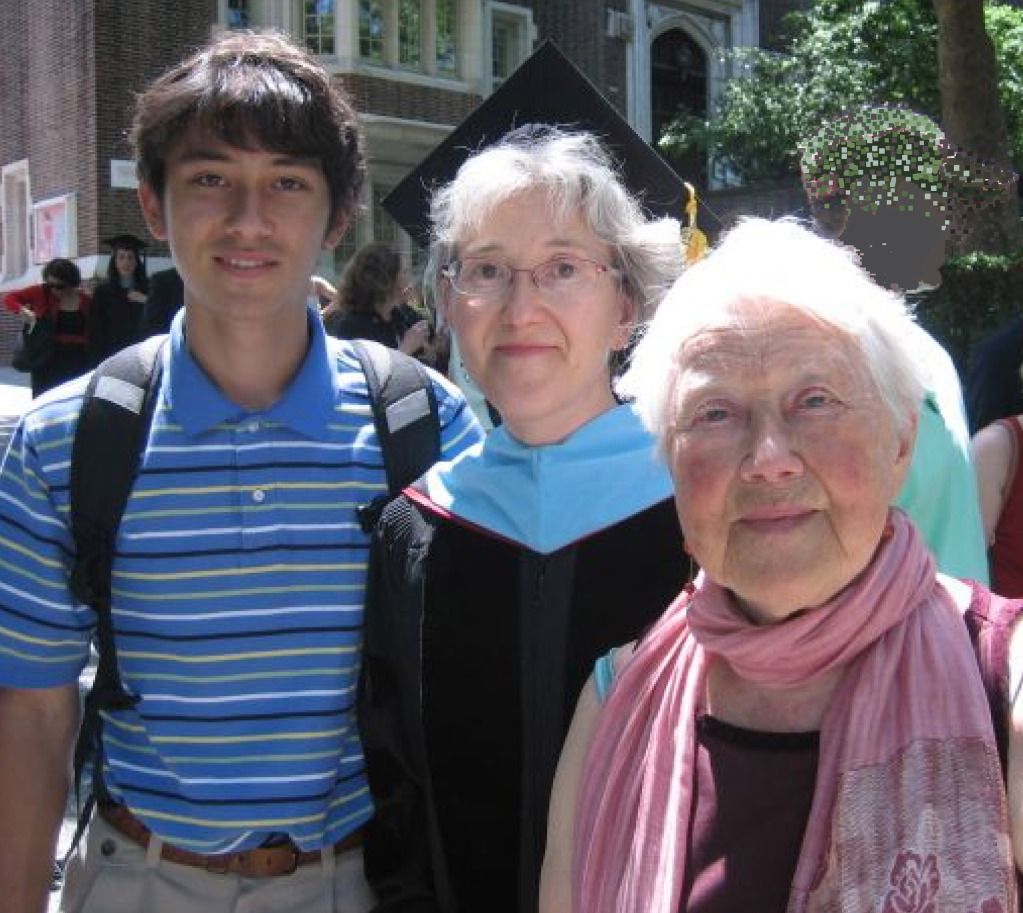 | |
Tara with her son, Kai Okada, and her mother, Kari Kise McGowan, celebrating Tara's graduation from the University of Pennsylvania
|
Tara's dissertation thesis is titled
Loosening the Ligatures of Text: Kamishibai Performance in the Modal Ecologies of 21st Century Classrooms
|
|
|
|
|